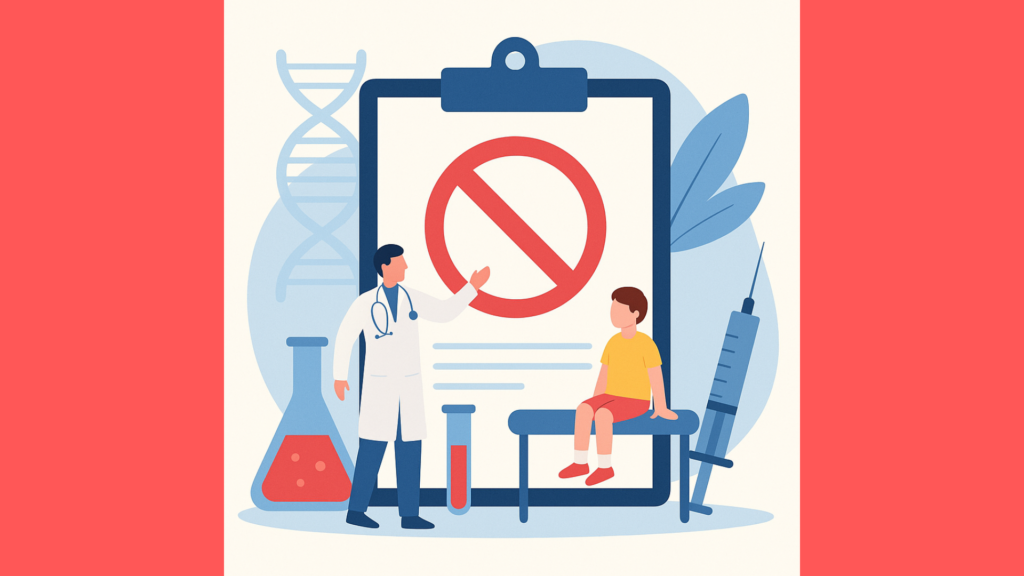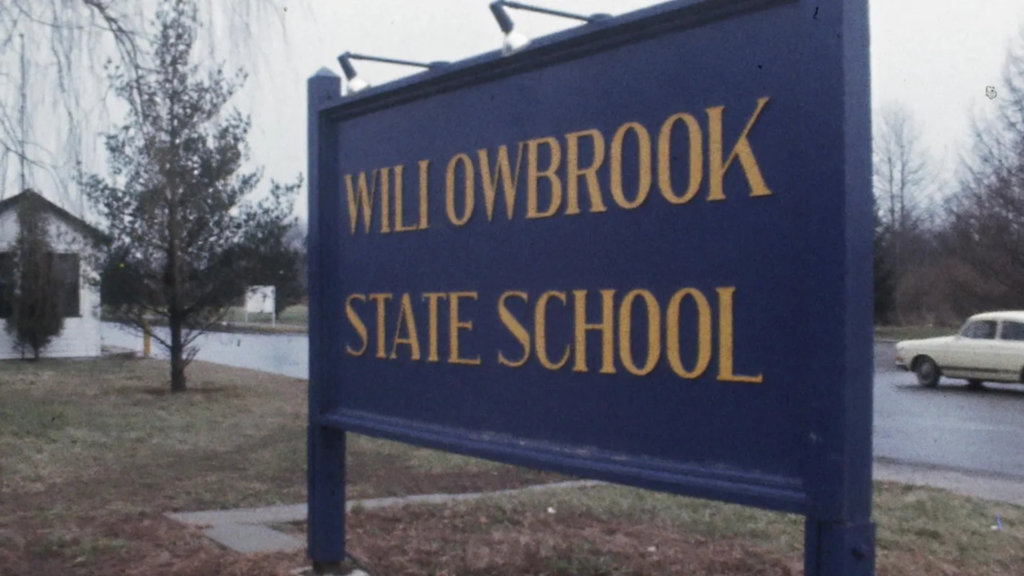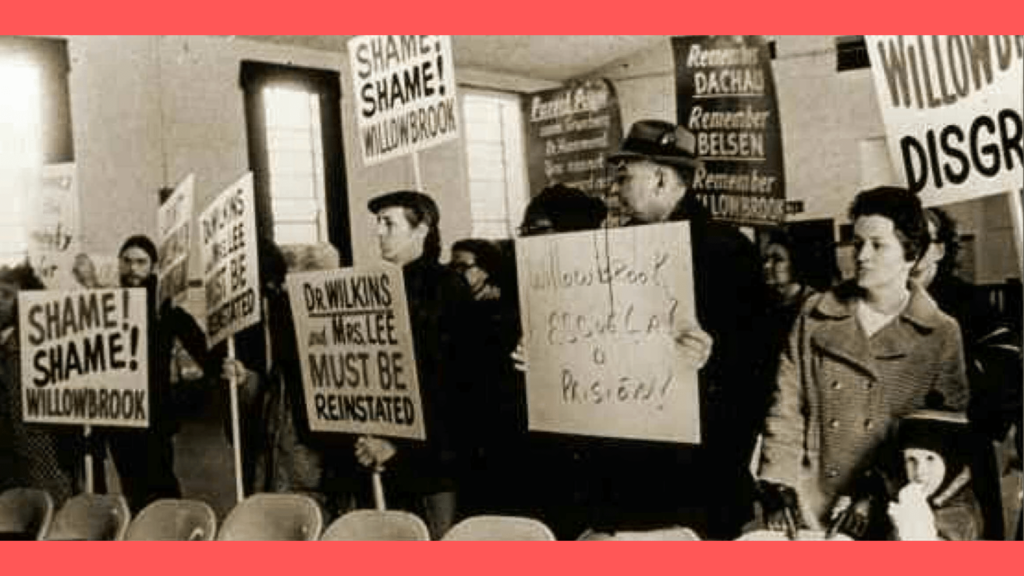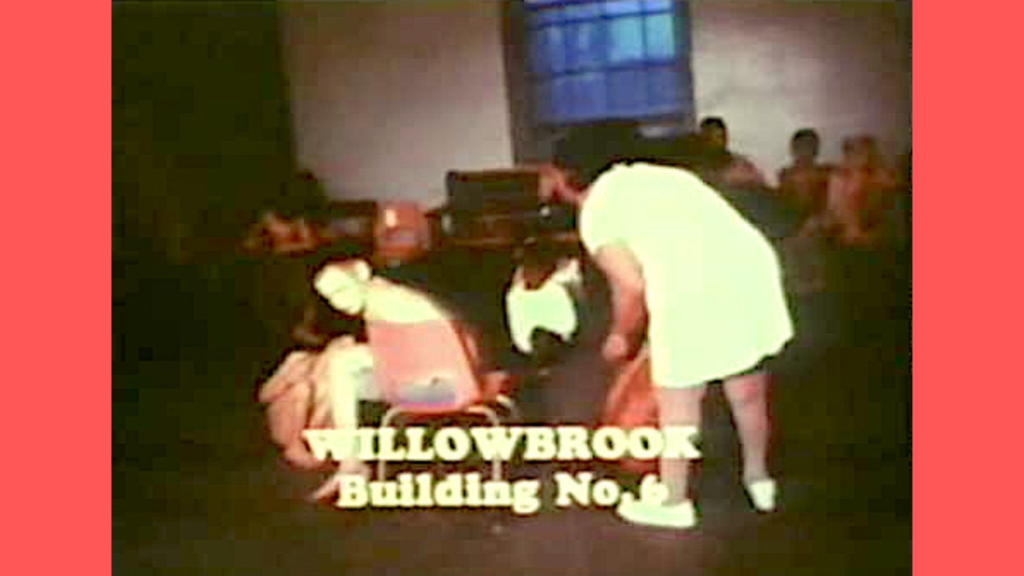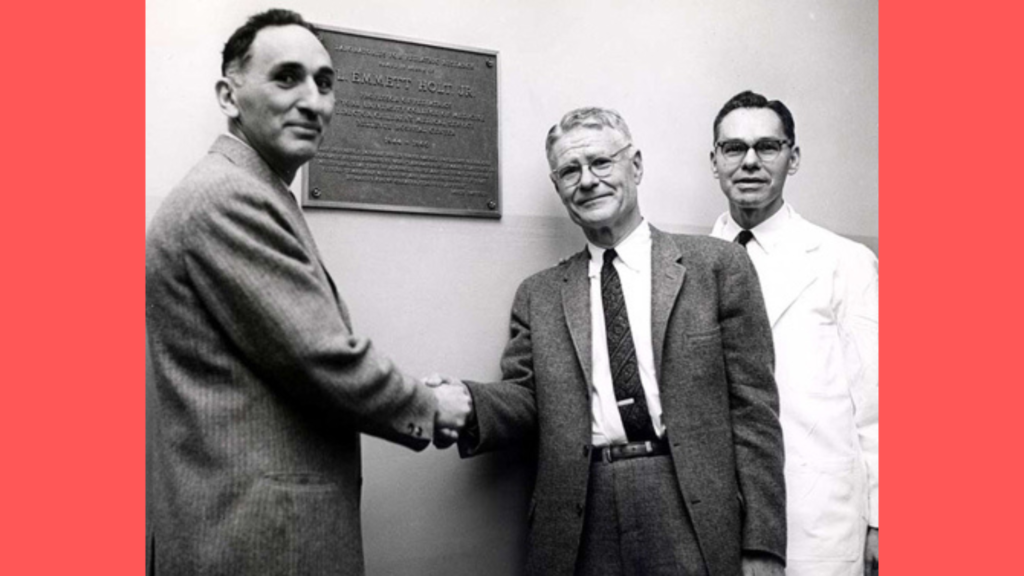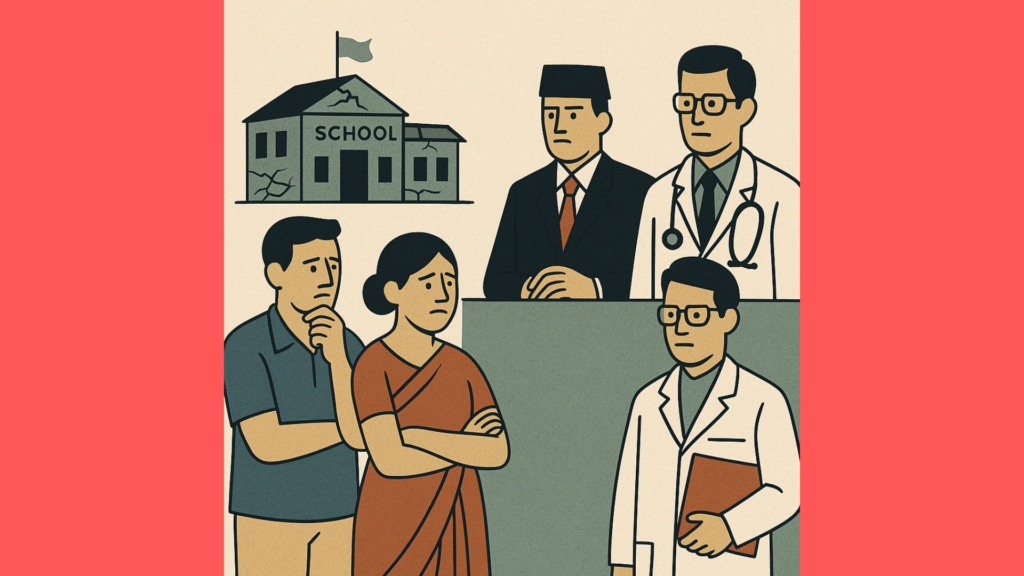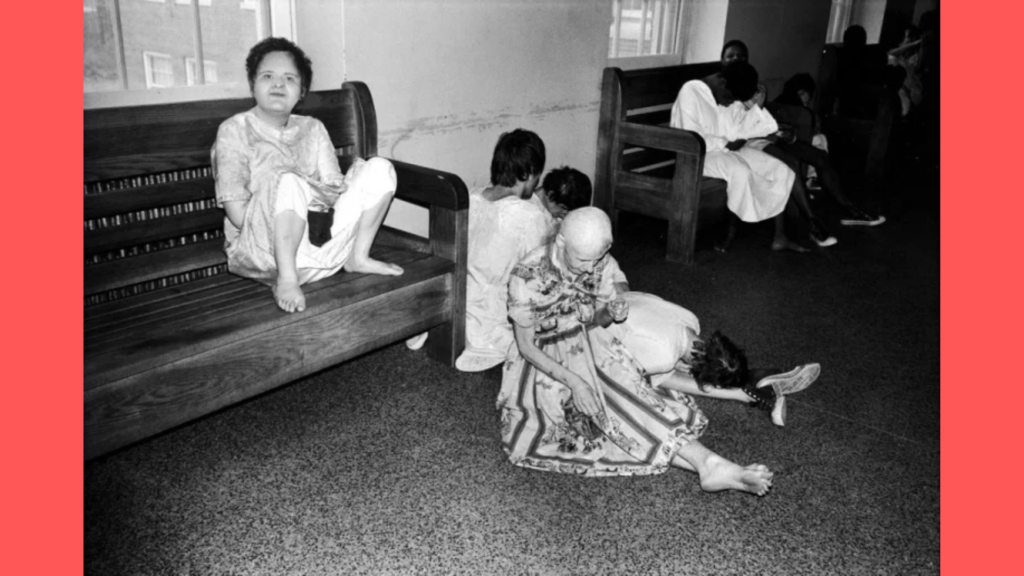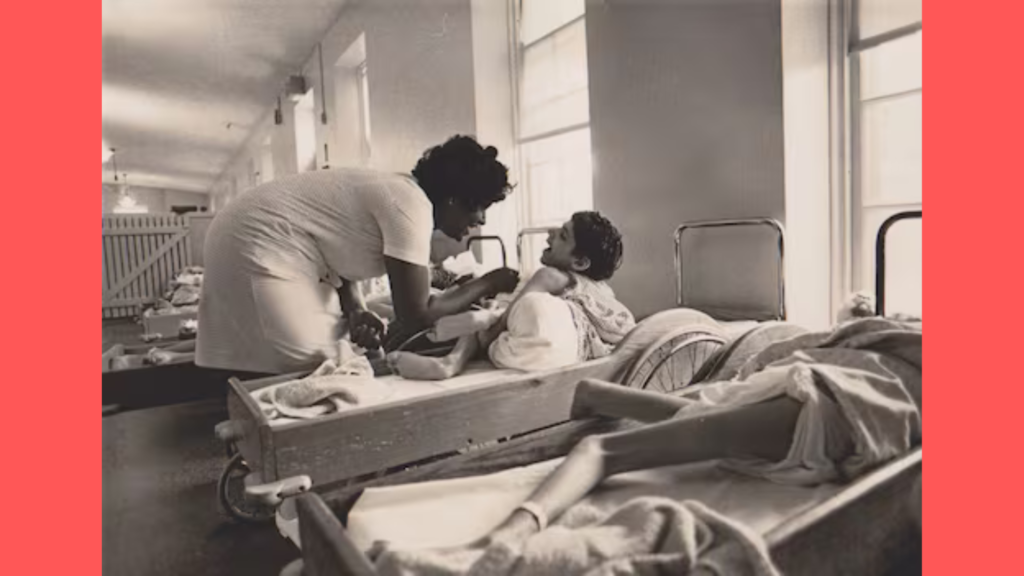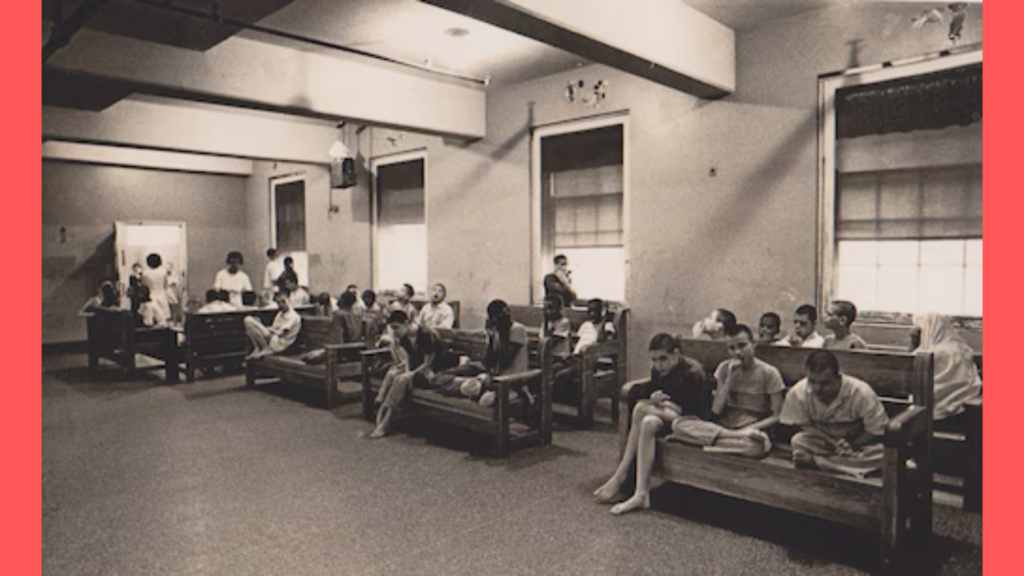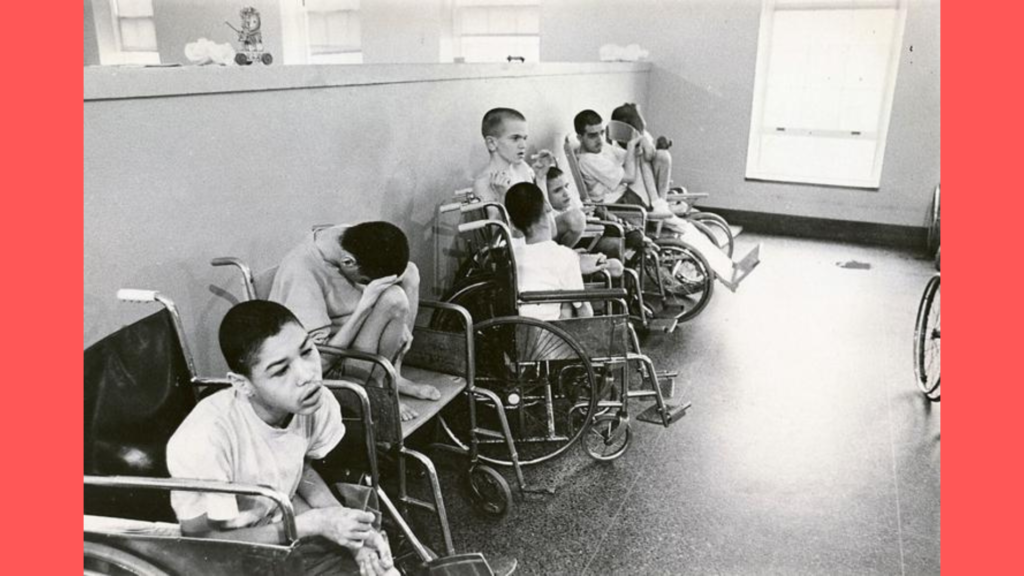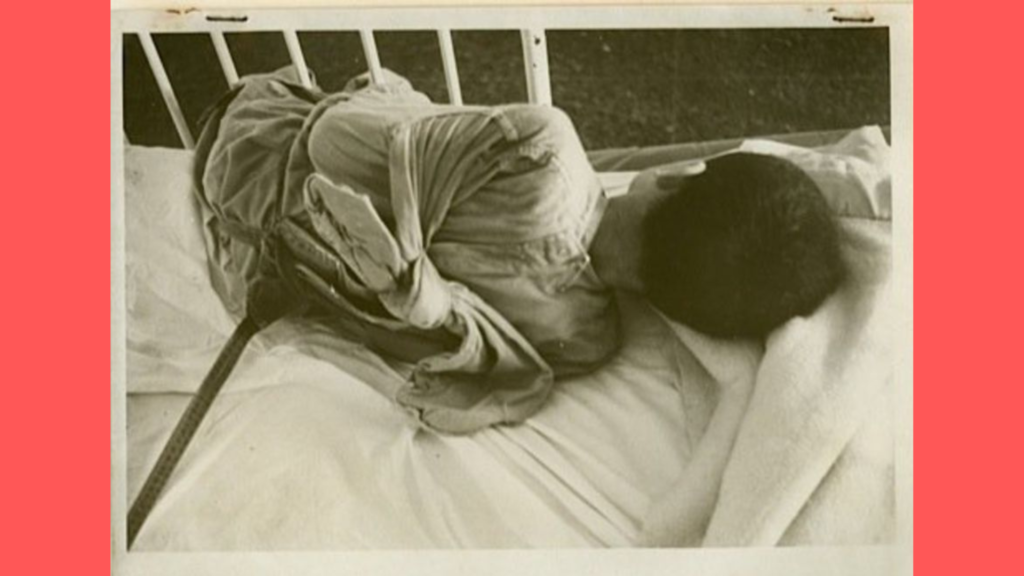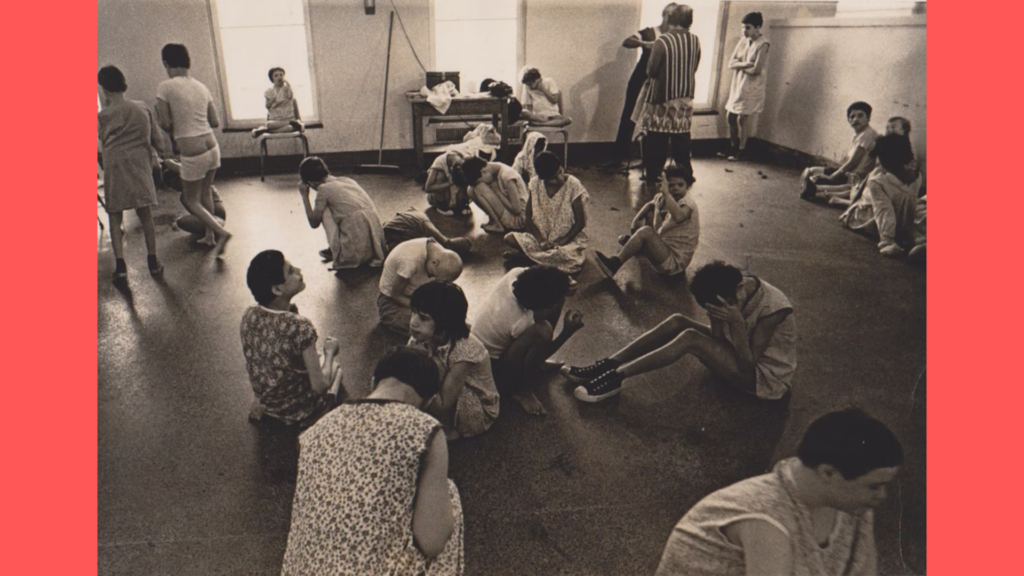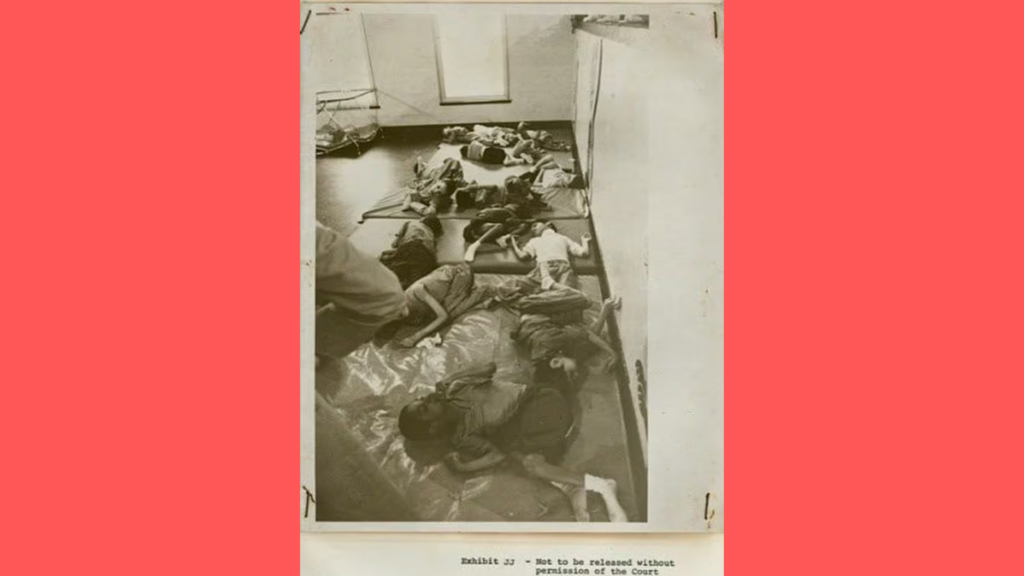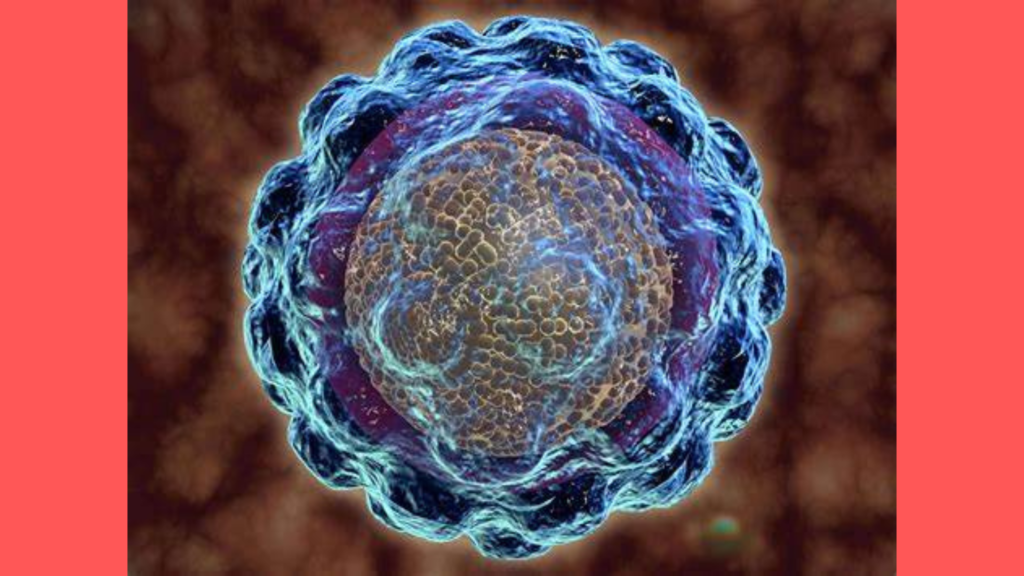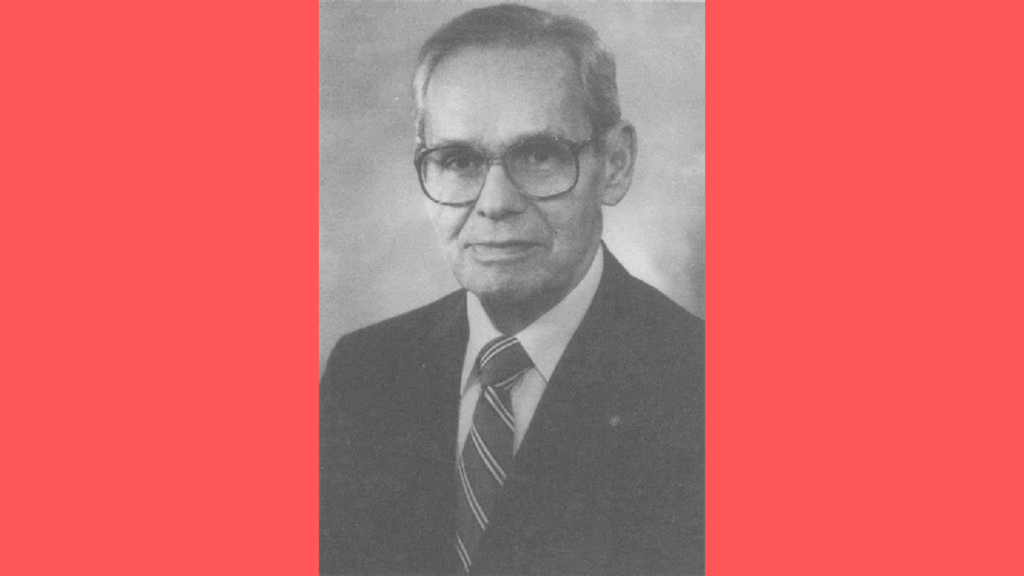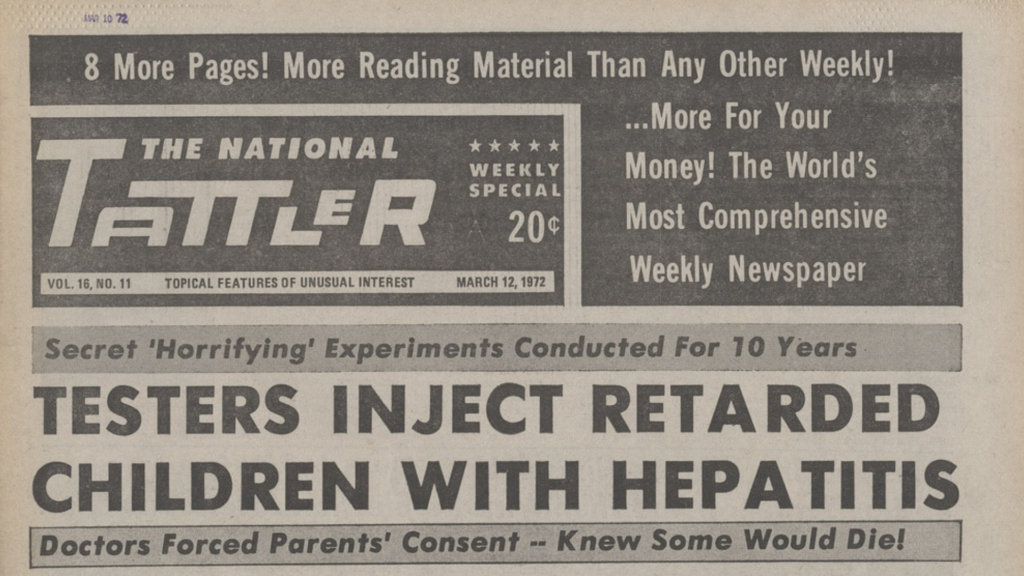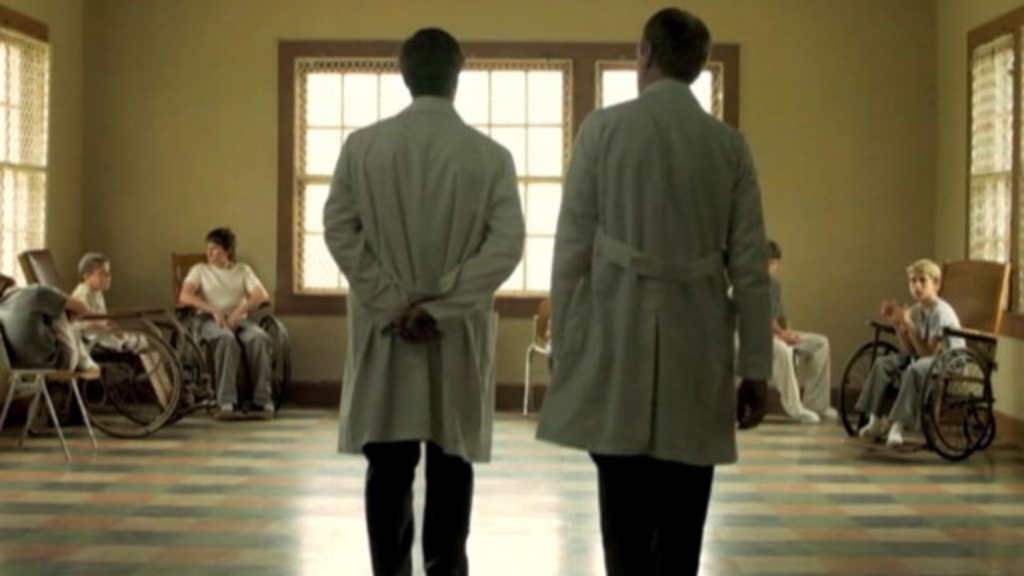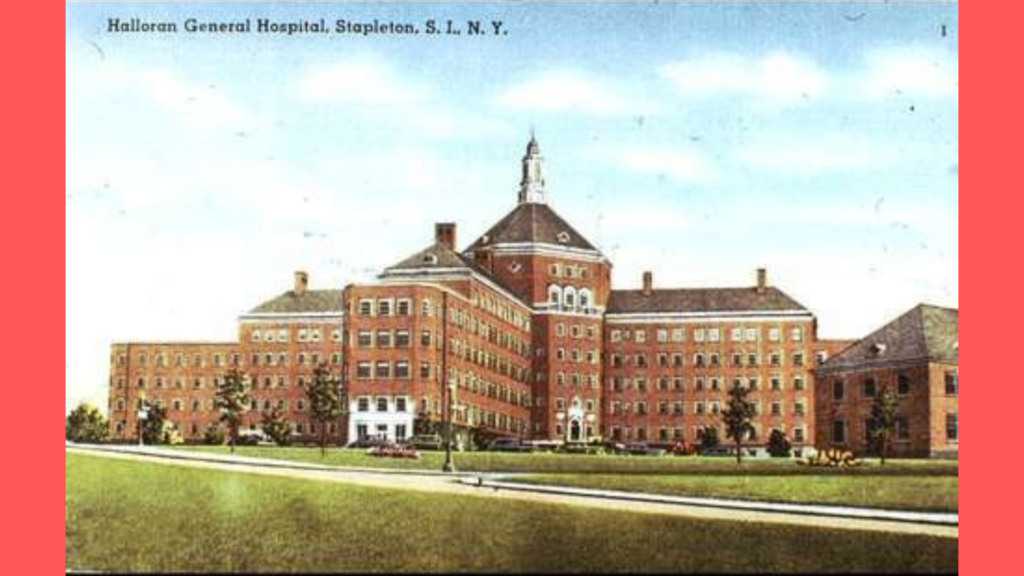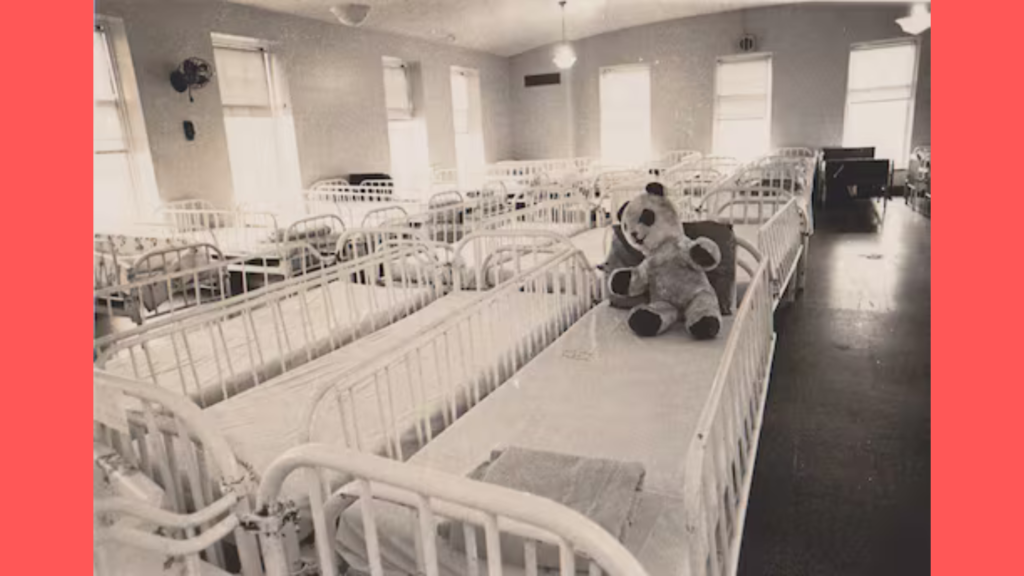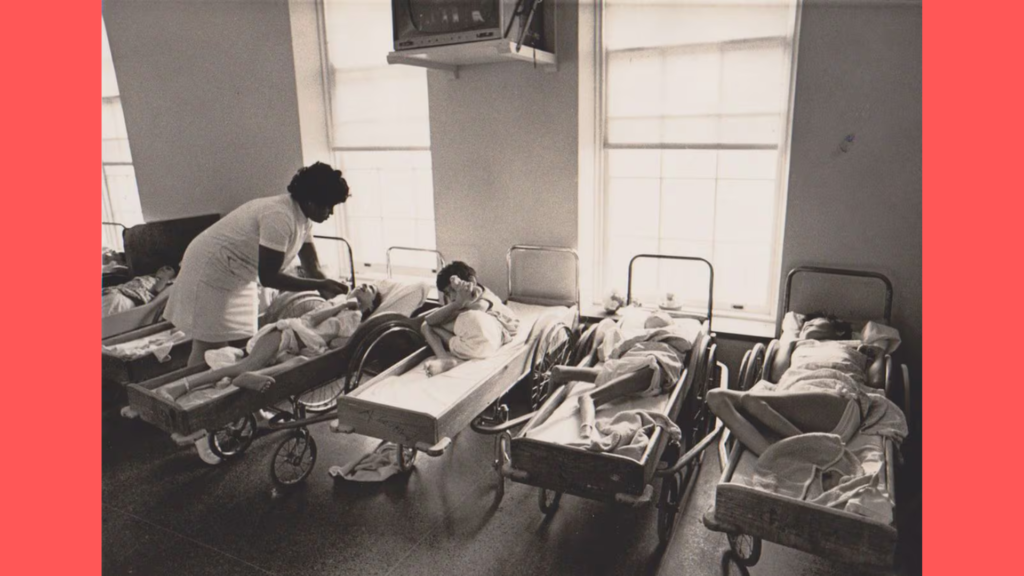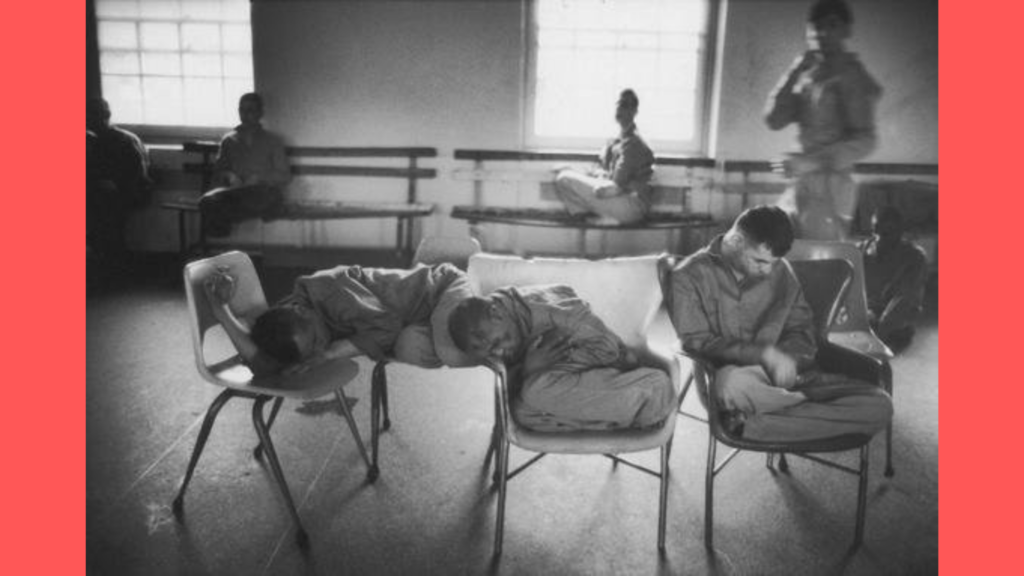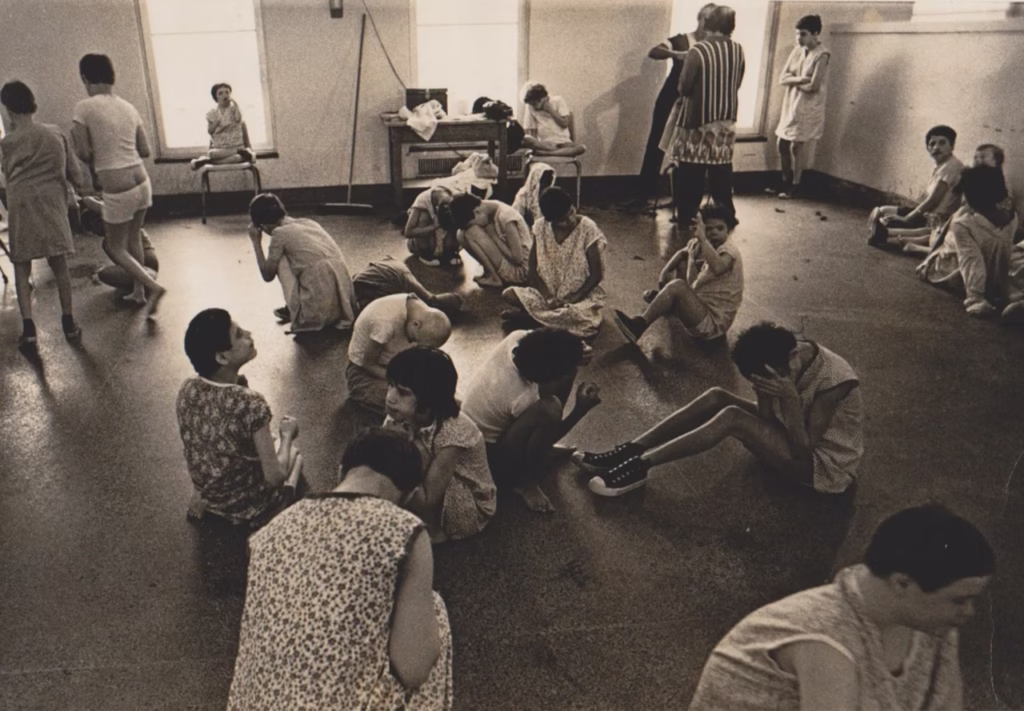
Overview
The Willowbrook State School Experiment is one of the most unsettling case studies of institutional abuse and unethical medical experimentation in the United States. Between the 1950s and the 1970s, this Staten Island institution became a breeding ground for controversy, horror, and shame—masking a dark legacy of state-enabled exploitation, scientific opportunism, and the systemic dehumanization of children with disabilities.
This blog unearths rarely discussed facts, internal motivations, forgotten voices, and the hidden consequences of the Willowbrook tragedy—more than just a hepatitis study, it was a systemic failure with centuries of context and decades of aftermath.
🏫 Genesis of Willowbrook: From Military Hospital to Mental Institution
Before becoming an institution for children with disabilities, the Willowbrook property had a different identity.
- Originally planned in the 1930s as a psychiatric hospital.
- During World War II, it was converted into the Willowbrook Army Hospital, treating soldiers returning from Europe and the Pacific.
- In 1947, it was handed over to New York State to be repurposed into a school for children with developmental and intellectual disabilities.
The transition from war hospital to institutional “school” meant that structures, staff, and operational models were ill-prepared for ethical treatment and long-term care. Military hospital blueprints were now being used to warehouse vulnerable children.
📊 The Numbers Behind the Neglect
- Built for: 4,000 individuals
- Peak population: Over 6,200 children by 1965
- Staff-to-child ratio: Sometimes as low as 1:40
- Annual budget: Often 25–40% less per patient than in comparable state institutions
Children were packed into rooms without privacy, often without clothing, lying in their own excrement. Many were non-verbal or cognitively impaired, unable to understand or escape the horrors around them.
🧪 The Willowbrook Hepatitis Experiments: A Hidden Laboratory
🌡️ How the Study Began
In the early 1950s, Dr. Saul Krugman, a pediatrician and professor at NYU, proposed a controlled hepatitis study at Willowbrook, rationalizing that:
- Hepatitis outbreaks were already rampant in the facility.
- Controlled infection would be “more humane” than random exposure.
- A vaccine could be developed to protect the military and public from hepatitis.
But this “rationalization” veiled a convenient exploitation: Willowbrook’s neglected children became ideal non-consenting subjects in a closed ecosystem—hidden from oversight and free from outside scrutiny.
🧬 Infection Method: Unspeakable Techniques
Contrary to popular summaries, infection was not just through chocolate milk. Children were infected using:
- Oral ingestion of stool-derived viral material
- Rectal administration of infected serums
- Occasionally, injections of contaminated blood to produce different hepatitis strains
Documents reveal that nearly all subjects developed symptoms—ranging from vomiting and diarrhea to severe liver damage.
❝In some cases, the children were sick for weeks… and nobody told us why. We thought it was just part of being here.❞ — Survivor Interview, 1989
🧫 Krugman’s Classification Breakthrough
Krugman’s experiments helped distinguish Hepatitis A (short-incubation) from Hepatitis B (long-incubation). While this was a true scientific advancement, it came at the expense of children who had no concept of what was happening to them.
Krugman presented his results at elite medical conferences and in prestigious journals, often receiving standing ovations while never disclosing the full scope of coercion and harm.
💼 The Role of the State: Complicity and Cover-Up
🏛️ State Funding & Legal Loopholes
- NY State Department of Mental Hygiene funded many aspects of the experiment.
- Legal loopholes allowed the classification of children as “wards of the state,” removing typical parental consent protocols.
- Parents were told: “If you want your child admitted, you must agree to this.”
This unethical “consent” system exploited lower-income, minority families, who had little power or legal support.
🎥 Geraldo Rivera’s Exposé: The Shocking Truth Revealed
In 1972, journalist Geraldo Rivera, tipped off by a former Willowbrook physician, snuck into the facility with a hidden camera. The footage he aired on ABC News in “Willowbrook: The Last Great Disgrace” showed:
- Naked children moaning in dark rooms
- Unbathed, malnourished, and rocking in distress
- Untrained staff screaming and physically handling kids like animals
- Children covered in feces, confined without mobility aids
The images horrified the nation and sparked the beginning of the end for Willowbrook.
🧾 Legal Fallout & the Consent Decree of 1975
A class-action lawsuit brought by the New York Civil Liberties Union and parent advocacy groups resulted in a landmark Consent Decree:
- The state agreed to gradually reduce Willowbrook’s population.
- Institutional reforms and oversight were introduced.
- Federal policies began requiring IRB approval for any human experimentation.
🪦 The Unmarked Graves and Forgotten Victims
Behind the institutional buildings was the burial site for hundreds of Willowbrook children. Most were:
- Buried without headstones
- Labeled only by institution numbers
- Buried en masse on Hart Island and unmarked Staten Island plots
Recent forensic efforts have tried to identify these victims, but records were poorly kept or deliberately destroyed.
🧠 Psychological Damage: The Lingering Aftermath
Survivors and families report:
- Lifelong PTSD
- Fear of hospitals and authority
- Unexplained chronic illnesses
- Some committed suicide or became homeless in the 1980s after deinstitutionalization
🧩 Lesser-Known Facts & Rare Insights
- Krugman’s Lab Journals mention “Child Subject #67” who had to be “restrained” during the blood-draw phase for 19 days straight. This child’s fate remains unknown.
- Willowbrook had underground tunnels, used to transport dead bodies and move children between wards without public visibility.
- Secret visits by military doctors from Fort Detrick in the late 1960s suggest Willowbrook may have been used as a biowarfare testing ground.
- Children were often drugged before examinations, despite having no medical reason for sedation.
- In 1963, Senator Robert F. Kennedy visited and later called Willowbrook a “snake pit”—but no action was taken until a decade later.
🧑⚖️ Institutional Legacy: Reforms Sparked by Horror
⚖️ Key Outcomes
- National Research Act (1974): Required oversight committees for all human experimentation.
- Americans with Disabilities Act (1990): Brought legal protections to people with disabilities.
- Family and Advocacy Networks: Parents of Willowbrook survivors became leaders in the disability rights movement.
🏛️ What Stands There Today?
Today, the site of Willowbrook is occupied by the College of Staten Island. A small memorial plaque honors the victims—but many students walk the halls, unaware of the dark legacy beneath their feet.
📚 Final Thoughts: Why We Must Remember Willowbrook
The Willowbrook State School Experiment represents the collision of science, power, and discrimination. Children—abandoned by society—were stripped of their humanity and used as tools in a medical machine.
Let it serve as a permanent warning: No scientific breakthrough is worth the soul of an innocent. Ethics must never be retrofitted. It must be built-in.
50 Rare and SEO-Friendly FAQs with Answers on Willowbrook State School Experiment
1. Why was Willowbrook chosen for hepatitis experiments instead of a hospital or lab?
Willowbrook was selected because its overcrowded, unhygienic environment naturally bred hepatitis outbreaks. Researchers saw this as a “natural lab,” making it easier to conduct controlled infection studies without external variables.
2. Were any children permanently disabled as a result of the hepatitis experiments?
Yes. Several children reportedly developed chronic liver damage, severe immune responses, and neurological regressions due to repeated illness or untreated symptoms, though exact numbers were not officially disclosed.
3. Did any major medical institutions fund the Willowbrook experiments?
Yes. NYU’s School of Medicine supported and facilitated much of Dr. Krugman’s research. Additionally, several grants from the U.S. Army and federal health agencies were routed toward hepatitis vaccine development.
4. What role did racial or socioeconomic bias play in the selection of test subjects?
Most children at Willowbrook came from low-income, minority, or immigrant families. These families had fewer resources or legal knowledge, making them more susceptible to coercion and manipulation.
5. Were any of the Willowbrook children later tracked for long-term health outcomes?
No comprehensive long-term health studies were performed on the children post-experiment. The state did not systematically track participants once they were discharged or the institution closed.
6. Were there whistleblowers before Geraldo Rivera?
Yes. Dr. William Bronston, a physician at Willowbrook, attempted to expose conditions internally in the late 1960s but was ignored. He later worked with Rivera to support public exposure.
7. What diseases, besides hepatitis, spread within Willowbrook due to neglect?
Outbreaks of measles, tuberculosis, ringworm, influenza, pneumonia, and lice infestations were common. There were also unexplained deaths attributed to sepsis and meningitis.
8. Were children at Willowbrook subject to other types of medical testing besides hepatitis?
Yes. Anecdotal and partial archival evidence suggests some children underwent psychotropic drug trials, behavioral conditioning tests, and sensory deprivation studies, though these were undocumented and remain speculative.
9. What happened to Dr. Saul Krugman after the experiments ended?
He went on to receive awards from organizations like the American Pediatric Society and continued teaching at NYU. His controversial legacy is still debated within medical ethics circles.
10. Were there ever any independent audits of Willowbrook during the experiments?
No. The institution was largely shielded from external audits. The State Department of Mental Hygiene kept internal records, but these were inaccessible to the public until much later.
11. Was Willowbrook’s layout designed for secrecy?
Partially. It had subterranean tunnels, unmarked medical wings, and restricted access points. These features, originally designed for military use, later supported the concealment of abuses.
12. Were any children adopted out of Willowbrook during or after the experiments?
Rarely. Due to the stigma surrounding intellectual disability, very few children were adopted. Those who were often experienced severe trauma-related behavioral issues.
13. Did any parents ever sue the state for their child’s death during the experiments?
Yes, but most lawsuits were sealed or dismissed. One 1967 case involved a child who died of fulminant hepatitis but was settled out of court with a gag order.
14. Were autopsies performed on children who died during the study?
Yes, but many autopsy reports are missing or altered. Some families were denied access to full reports, leading to speculation of cover-ups.
15. How did Willowbrook influence the development of IRBs in the U.S.?
The scandal helped drive the creation of Institutional Review Boards (IRBs) in 1974 to ensure informed consent, scientific justification, and ethical conduct for all human subject research.
16. What happened to staff who participated in the experiments?
Most staff were never held accountable. Some researchers received academic promotions; only a few aides or orderlies lost their jobs after the Rivera exposé.
17. Were there child labor allegations at Willowbrook?
Yes. Some accounts mention children being forced to clean, assist staff, or participate in “mock learning experiments” as unpaid labor, although these claims were never formally investigated.
18. Did Willowbrook influence popular culture or film?
Yes. The horror film “The Dead Pit” (1989) and the book “Asylum” by Enoch Callaway were inspired in part by Willowbrook’s legacy. It also influenced psychiatric horror tropes in media.
19. Were there any military applications for the hepatitis research?
Yes. There is documented interest from military health officials in developing vaccines for soldiers deployed abroad. Willowbrook findings were cited in internal Pentagon health bulletins.
20. What happened to records and journals from Willowbrook?
Many were destroyed in a fire in the 1980s. Others remain archived under restricted access at New York state and NYU facilities.
21. Were children subjected to punishment or isolation during the experiments?
Yes. If children resisted medication or blood draws, they were sometimes confined to solitary rooms or tied down for hours or days.
22. Were girls and boys treated differently at Willowbrook?
Yes. Girls were often placed in more restrictive units with limited physical activity, while boys were more likely to be used in physical experiments and behavioral trials.
23. Did the hepatitis experiments alter the natural outbreak pattern within Willowbrook?
Ironically, yes. Controlled infections worsened outbreak patterns by introducing multiple hepatitis strains into communal areas, making natural containment harder.
24. Were researchers aware of the psychological trauma they were inflicting?
Internal notes suggest some awareness. One note read: “Subject #34 presents signs of extreme withdrawal after third inoculation.” Yet, the experiments continued regardless.
25. Did any families campaign for criminal charges?
Yes, but criminal charges were never filed. Civil lawsuits were settled quietly, and the state invoked “sovereign immunity” in many cases.
26. Are any survivors alive today and speaking publicly?
Yes. A handful have shared their stories through podcasts, documentaries, and advocacy campaigns for disability justice.
27. Was any medical literature later retracted due to ethical issues?
No. Krugman’s papers remain in respected journals. Ethical debates emerged later but did not affect their academic standing.
28. Did Willowbrook have a functioning educational curriculum?
Not effectively. “Classes” often involved repetition tasks, rote memorization, or unlicensed behavioral trials disguised as instruction.
29. Were any government officials prosecuted for neglect?
No government officials were ever criminally charged, despite widespread knowledge of conditions for over a decade.
30. Were sterilizations performed at Willowbrook?
There is anecdotal evidence that involuntary sterilizations occurred, particularly in the 1950s–60s, often under the guise of “menstrual regulation.”
31. Was music or therapy ever used for the children?
Rarely. Some reports mention music therapy and play therapy introduced in the early 1970s but were discontinued due to funding cuts.
32. Did children at Willowbrook communicate using sign language or symbols?
Some developed their own non-verbal communication systems, often consisting of gestures or hand-flapping understood by peers.
33. Were any pharmaceutical companies involved in the trials?
Yes, though covertly. Internal letters mention consultation with drug manufacturers developing early versions of immune-boosting agents.
34. Did the state ever publicly apologize for Willowbrook?
A formal apology was issued in 2002 by New York Governor George Pataki, decades after the facility closed.
35. Are any parts of Willowbrook still standing?
Yes. Some original buildings remain on the College of Staten Island campus, though most have been repurposed or renovated.
36. Did any religious institutions speak out against Willowbrook?
Surprisingly, no major religious organizations criticized the school during its operation, despite involvement in broader disability care.
37. Did Willowbrook house children with autism?
Yes, though many were misdiagnosed or labeled as “incorrigible.” Autism was poorly understood during the facility’s operational years.
38. Was water or food ever used to coerce children into compliance?
Yes. Denial of snacks or water was used as a punishment or incentive to participate in testing or to behave.
39. Were there suicide attempts at Willowbrook?
Yes. Staff reports mention children self-harming or attempting suicide, but these were rarely documented or treated.
40. Did any of the staff regret their participation?
Some did. In oral histories, former nurses and orderlies expressed guilt but claimed they feared job loss if they spoke out.
41. Were children allowed to receive mail or visits?
Infrequently. Visits were restricted, and letters were often intercepted or lost. Many families lived too far or lacked transportation.
42. How did staff respond to Geraldo Rivera’s exposé?
Many were furious, fearing job loss or legal trouble. Others supported the exposure, claiming it was “about time.”
43. Were any experiments secretly filmed for medical training?
Yes. Some hepatitis trials were filmed without child consent and shown at academic conferences to demonstrate disease progression.
44. Did the experiments involve newborns or toddlers?
Yes. Some children as young as 18 months were infected, based on internal reports describing “infants with acute reactions.”
45. Were there behavioral modification experiments using punishment?
Yes. Shock pads, cold water therapy, and seclusion rooms were used to modify what was deemed “undesirable behavior.”
46. Did the institution ever lose funding due to public criticism?
No. In fact, state funding increased temporarily after Rivera’s exposé to fund minimal reforms.
47. Were staff trained in handling disabilities?
Very few were. Many staff had no formal education in special needs care or ethics. They were hired for low wages and trained on-site.
48. Are there any fiction books inspired by Willowbrook?
Yes. The novel “We Were the Lucky Ones” and the thriller “The Binding Chair” include plotlines inspired by real institutions like Willowbrook.
49. Was there internal resistance within the school?
Yes. Some teachers and aides reported conditions anonymously or quit in protest, but systemic reform was stifled.
50. What became of Willowbrook’s central records archive?
Many files were moved to state archives, but over 30% remain unaccounted for or were destroyed without explanation.


